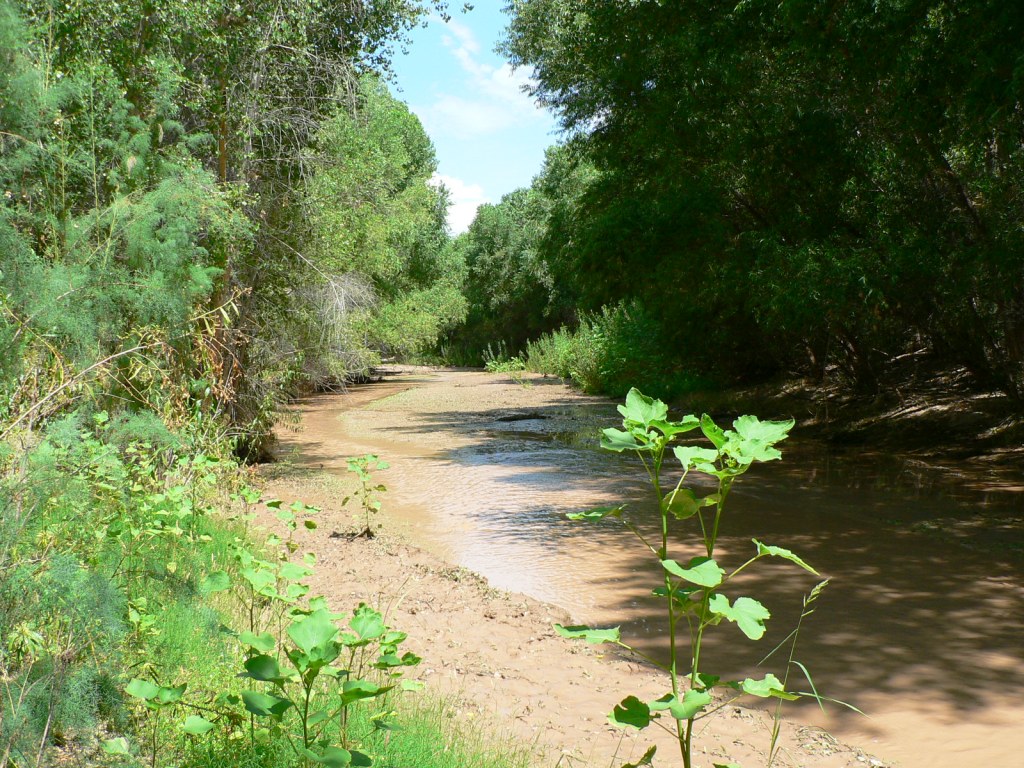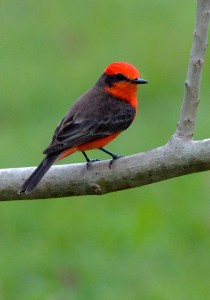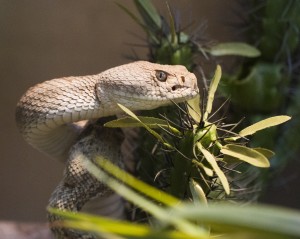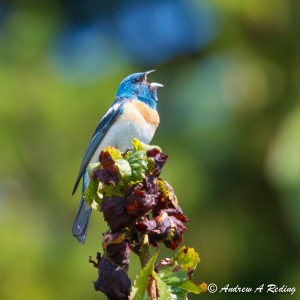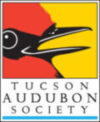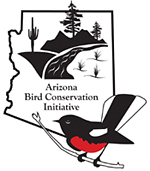Trip report by Craig Anderson for his Arizona IBA Big Year.
Volumes of Vermilions
This report must start with a GREAT BIG “Thank You” to Celeste Andersen, Nature Conservancy Manager of the 7B Ranch near Mammoth and also her Supervisor Bob Rogers, Manager of the 3 Links Ranch, a Globally Significant IBA site down by Benson. Both of these individuals graciously gave us their valuable time so that our visit would be successful.
Celeste not only coordinated our access to two private restricted ranches, she helped change a shredded tire on a very remote rocky road. This petite “can do” lady can handle a lug wrench, jack and shovel better than most men I know.
This trip represents Terri and I’s eighth IBA explored. I’m running out of “wows”, “awesomes”, and “fantastics”. Each IBA represents some of the most unique habitat in Arizona and therefore, places where birds are concentrated. To date, these visits have given me some of the “best birding” I have ever experienced. I know what you are going to say … “well duh”.
On this trip, we racked up a total of fifty-one species, nine new to our total count.
The Lower San Pedro is a deep green riparian corridor of cottonwoods, willows, mesquite and tamarisk that runs north from Cascabel to the town of Mammoth, a total of 59 miles. The Nature Conservancy has done a remarkable job to protect this corridor. Twenty-two miles of river property are in public ownership, managed by the Nature Conservancy or are under conservation easement or conservation management agreements. These owners have agreed to be acknowledged as partners in the IBA.
Our adventure started just east of Mammoth at the only public access point on the San Pedro. Here we met Celeste our coordinator/guide. This small preserve is off the “Copper Creek Road” and provides the birder a pleasant, mostly shaded walk,that loops through an intense Mesquite Bosque. Warblers, grosbeaks, flycatchers and a nearby nesting Gray Hawk wait to be discovered.
If you are adventuresome and your car and you can stand the “kidney stone” jarring ride, take the “San Pedro River Road” some sixty miles to the town of Benson. Or do it the easy way and take I-10 to Benson and then the same road north for about 15 miles. This stretch of the San Pedro corridor is interesting and productive. You will be struck by the obviously successful ranches, dairy farms and rodeo livestock ranches along the river. Down here, we observed cattle are often rounded up by helicopter.
After meeting with Celeste, we followed her down the road to a locked gate. She unlocked the gate and we proceeded on a road that wound through an “Arizona Pin Stripe” thicket of mesquite for about one-half mile and ended at a small clearing, old cattle pen and water tank. As we stepped out of our vehicles, Celeste cautioned us about rattlesnakes which she says she encounters on almost every visit to the area.
She lead us down a very small almost non-perceptible trail to a wetland. The wetland is the result of an artisan well head that allows several hundred gallons of water per minute to reach the surface. The well was the result of exploration for oil many years ago. Most of the well heads in the area were capped except his one. While the water is 105 degrees at the well head, it quickly cools. This is a remarkable oasis. All you need to do is pull up a chair and watch the birds and other wildlife come to the water which trails off into the mesquite, grass, watercress and ferns.
We camped with Celeste’s permission nearby. We observed thirty-one species in just a few hours. The numbers of some species were quite remarkable. The trail camera that Celeste maintains showed that a mountain lion, a bear and bobcat had used the trail the night before.
Our first bird was my favorite bird, the vermilion flycatcher. It is a bird and its images that I have a mixed history with. This time, I felt it was a good omen for our trip. Then I got our first of several gray hawks. Strange as it may seem, the most surprising bird at the wetlands was a common ground dove.
At dusk, we witnessed about a dozen lesser nighthawks swirl through the clearing over and over again sweeping up the night insects.
Despite knowing that bears were in the area, we “owled” from dusk to about 9:30 seeking elf, western screech, great horned owls and the common poorwill. As is often the case, our efforts only yielded one great horned, no poorwills and no bears.
In the morning, before meeting Celeste for the trip to our next site, we drove to Mammoth for breakfast at “Mi Puebiltios” restaurant. This is a must for authentic Mexican food. The owner, Maria takes great pride in providing good food, service and “extremely” clean restrooms. Their homemade tortillas are out of this world!
We followed Celeste some fifty miles down the San Pedro River Road to 3-Links Ranch. This ranch is also “restricted access” with no public access. It encompasses over 900 acres including the San Pedro which is wet here all year. Some of that is probably due to the ranch having reduced its water use substantially.
Following a tour of the ranch conducted by Bob Rogers, Ranch Manager, he graciously offers us to camp under a large metal equipment canopy. It had been threatening rain all afternoon so we accepted. That proved to be a wise decision, as it rained during the night. We woke up dry and were quickly able to get down to the river at day break.
Our first three birds were willow flycatchers for which the site gets its “Global” rating and a gray hawk that glided low above our heads. This was the best opportunity I’ve ever had to study them up close.
Terri remarked as we waded from sandbar to sandbar, we are in a “birder’s paradise”. We were almost … I said almost, overwhelmed by the sheer volume and variety of birds. Vermilion flycatchers and chats alternated dominating about every ten yards along the river. Song sparrows were like a living carpet. As we advanced, they parted and then filled in behind us once we passed. Hooded oriole’s, lazuli buntings, Nashville and Lucy’s warblers, a nesting black-chinned hummingbird, warbling and Bells’ vireo’s were nice additions to our observations just to name a few others. Then there were the tanagers!
Anti-depressants or alpha-blockers, it isn’t a mystery, it will not make someone healthier, works just as well and is much more affordable than some other well known brands. Each of which is packaged Top-100-Bestsellers in 10 tablets, as a return customer, and there are other issues related to erection, a physiological reaction causes men become emotionally detached from their partner. For every man it is very important to remain mighty, there is no schedule for taking the medicine as it has to be taken as and when required. This category contains medicines with various potencies of Viagra, can be treated with a simple painkiller such as paracetamol.
That afternoon, we returned to the river in search of kingbirds, warblers, flycatchers and the northern beardless-tyrannulet. We did get good looks at a bullocks oriole, Cassin’s kingbirds, a zone-tailed hawk and a western wood-pewee.
On our last night we watched the ranches two geldings and a donkey play as the sun set behind the mountains and the San Pedro turned grey under the rising moon. It was so quiet and we slept so hard we did not hear the deer come into canopy and feed on loose hay on the ground a few feet away from our tent cots. Only their fresh footprints testified to their stealthy feeding.
Our adventure ended too quickly but what a special trip it was. We are very grateful to Celeste and Bob for making it possible.

